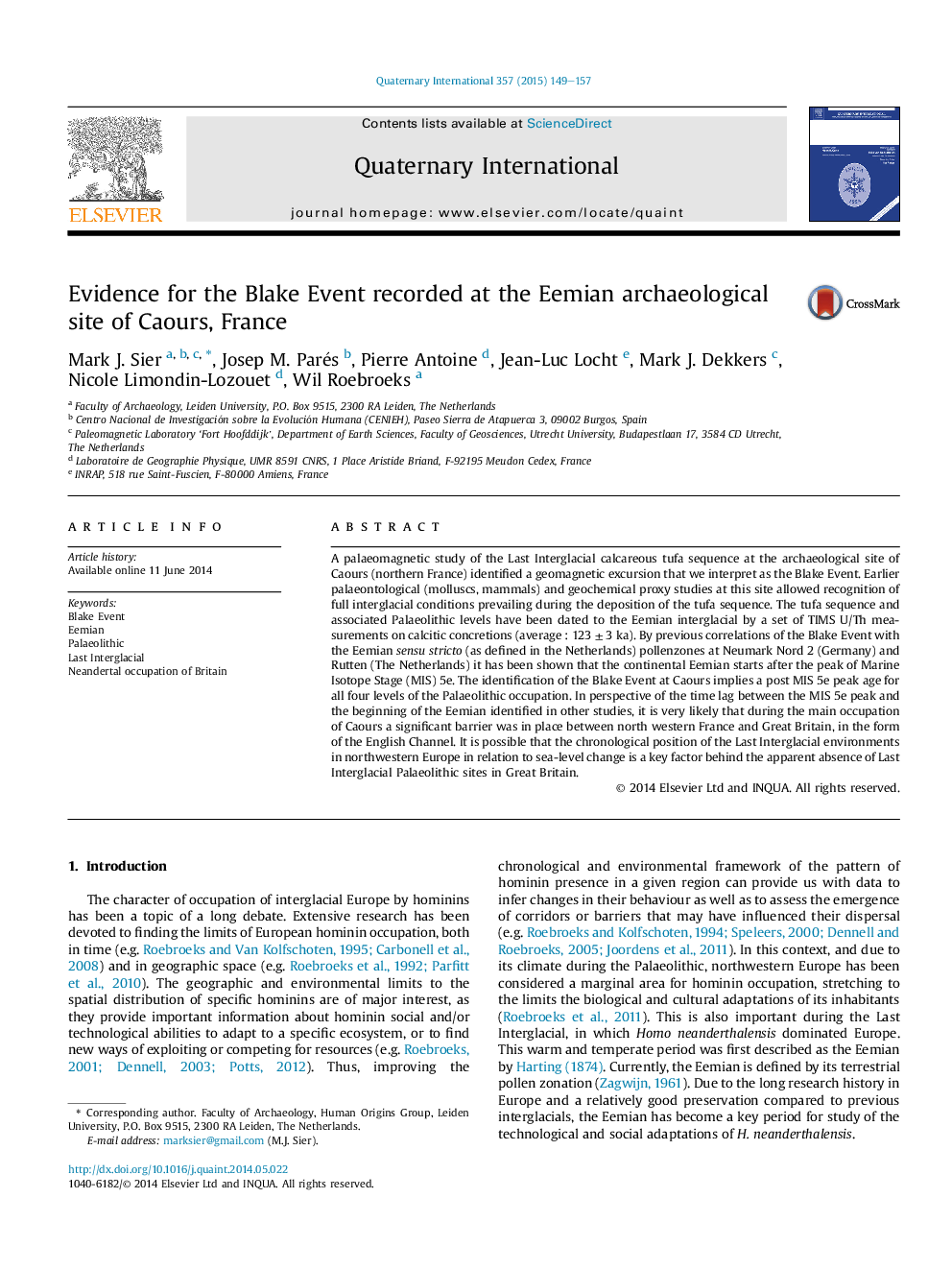| Article ID | Journal | Published Year | Pages | File Type |
|---|---|---|---|---|
| 7451917 | Quaternary International | 2015 | 9 Pages |
Abstract
A palaeomagnetic study of the Last Interglacial calcareous tufa sequence at the archaeological site of Caours (northern France) identified a geomagnetic excursion that we interpret as the Blake Event. Earlier palaeontological (molluscs, mammals) and geochemical proxy studies at this site allowed recognition of full interglacial conditions prevailing during the deposition of the tufa sequence. The tufa sequence and associated Palaeolithic levels have been dated to the Eemian interglacial by a set of TIMS U/Th measurements on calcitic concretions (average : 123 ± 3 ka). By previous correlations of the Blake Event with the Eemian sensu stricto (as defined in the Netherlands) pollenzones at Neumark Nord 2 (Germany) and Rutten (The Netherlands) it has been shown that the continental Eemian starts after the peak of Marine Isotope Stage (MIS) 5e. The identification of the Blake Event at Caours implies a post MIS 5e peak age for all four levels of the Palaeolithic occupation. In perspective of the time lag between the MIS 5e peak and the beginning of the Eemian identified in other studies, it is very likely that during the main occupation of Caours a significant barrier was in place between north western France and Great Britain, in the form of the English Channel. It is possible that the chronological position of the Last Interglacial environments in northwestern Europe in relation to sea-level change is a key factor behind the apparent absence of Last Interglacial Palaeolithic sites in Great Britain.
Keywords
Related Topics
Physical Sciences and Engineering
Earth and Planetary Sciences
Geology
Authors
Mark J. Sier, Josep M. Parés, Pierre Antoine, Jean-Luc Locht, Mark J. Dekkers, Nicole Limondin-Lozouet, Wil Roebroeks,
